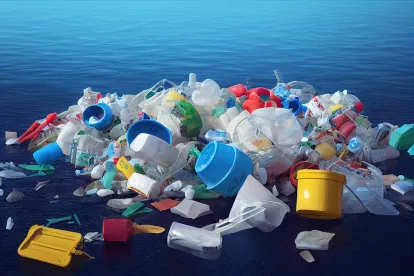On August 17, 2023, the U.S. Environmental Protection Agency (EPA), through its Office of Enforcement and Compliance Assurance (OECA), issued new National Enforcement and Compliance Initiatives (NECIs) for fiscal years (FY) 2024-2027. The initiatives signify a targeted approach to addressing key environmental concerns through rigorous enforcement actions and promoting comprehensive compliance. Of particular note are the additions of enforcement efforts targeting climate change (e.g., methane releases from oil and gas facilities), coal ash landfills and impoundments, and per- and polyfluoroalkyl substances (PFAS) contamination.
In addition, several current NECIs focused on aftermarket defeat devices for mobile sources, hazardous air pollutant emissions from hazardous waste facilities, and compliance with NPDES permit program will transition to the EPA’s core enforcement program as important enforcement and compliance priorities that are no longer national initiatives.
In a recent interview, David Uhlmann, the head of OCEA, suggested that EPA’s announced initiatives will be followed by increased enforcement activities, stating that “[w]hen we call something an initiative, we lift it up among all of our enforcement activities. We emphasize it in our messaging, and in our priority setting, we seek to obtain additional resources to allow us to do it—all of which gives us a much greater ability to address whatever the issue is than we would if we just have it reserved for our core enforcement programs.” (“Top Environment Enforcement Cop Aims to Meet Climate Moment.”)
FY 2024-2027 National Enforcement and Compliance Initiatives
Mitigating Climate Change (new): EPA’s primary emphasis on mitigating climate change centers on reducing greenhouse gas emissions. This initiative directs enforcement efforts towards methane emissions from oil and gas facilities, landfills, and hydrofluorocarbons (HFCs). Compliance with the Clean Air Act and the American Innovation and Manufacturing Act will be prioritized to curb climate-related impacts.
- Addressing Exposure to PFAS (new): This initiative zeroes in on PFAS contamination and takes a multifaceted approach, directing enforcement efforts toward compliance with existing statutes such as the Comprehensive Environmental Response, Compensation, and Liability Act (CERCLA) and the Safe Drinking Water Act (SDWA). EPA will identify parties significantly contributing to PFAS contamination, such as major manufacturers, federal facilities, and industrial entities. EPA’s enforcement focus will be guided by the magnitude of contribution to PFAS releases. Notably, this initiative acknowledges the nascent state of its PFAS regulation efforts by noting that enforcement efforts will be guided by future regulatory developments.
- Protecting Communities from Coal Ash Contamination (new): EPA’s emphasis on coal ash contamination seeks to improve coal combustion residuals (CCR) management. The initiative focuses on enforcing compliance with the Resource Conservation and Recovery Act (RCRA) requirements, thereby minimizing risks associated with coal ash contamination. This NECI focuses on conducting investigations, particularly at coal ash facilities impacting vulnerable or overburdened communities; taking enforcement action at coal ash facilities that are in violation; and protecting and cleaning up contaminated groundwater, surface water, and drinking water resources.
- Reducing Air Toxics in Overburdened Communities (modified from prior cycle): This initiative will seek to target, investigate, and address noncompliance with hazardous air pollutant (HAP) regulations with a focus on sources of HAPs in communities already highly burdened with pollution impacts. Where noncompliance is found and enforcement is appropriate, Regions will engage with community groups on appropriate relief to address the community’s concerns.
- Increasing Compliance with Drinking Water Standards (continued from prior cycle): EPA will continue efforts to enhance compliance with the Safe Drinking Water Act (SDWA). OECA will ramp up its field presence, pursue strategic enforcement to reduce noncompliance, and offer more compliance assistance.
- Chemical Accident Risk Reduction (continued from prior cycle): Through this initiative, EPA aims to reduce the likelihood of chemical accidents, with a focus on facilities handling anhydrous ammonia and hydrogen fluoride. Enforcement efforts will ensure compliance with safety regulations to prevent accidents that could result in fatalities, injuries, evacuations, and environmental damage through the implementation of risk management programs required under section 112(r) of the Clean Air Act. Notably, EPA states that it will “use all available enforcement tools,” including holding entities criminally responsible, to address violations of risk management requirements.
Return to Core Enforcement Program
Three current initiatives will return to the standard “core” enforcement program at the end of FY 2023. These include reducing HAP from hazardous waste facilities, eradicating aftermarket defeat devices in vehicles and engines, and reducing significant noncompliance with the National Pollutant Discharge Elimination System (NPDES) program. OECA and the Regions, in collaboration with authorized state programs, will continue to conduct inspections and pursue enforcement actions regarding these issues.
Conclusion
EPA’s announcement of new enforcement initiatives will likely be followed by increased oversight and investigative activity and, ultimately, an increased number of civil and criminal enforcement actions. Assistant Administrator Uhlmann is an experienced enforcement official who will be leading an enforcement staff that is growing by as many as 270 professionals. A number of different industries, including those emitting methane, should expect increased scrutiny. It may be prudent for companies operating in these industries to perform a compliance self-assessment to identify and mitigate enforcement and litigation risks associated with ongoing operations.





 />i
/>i

